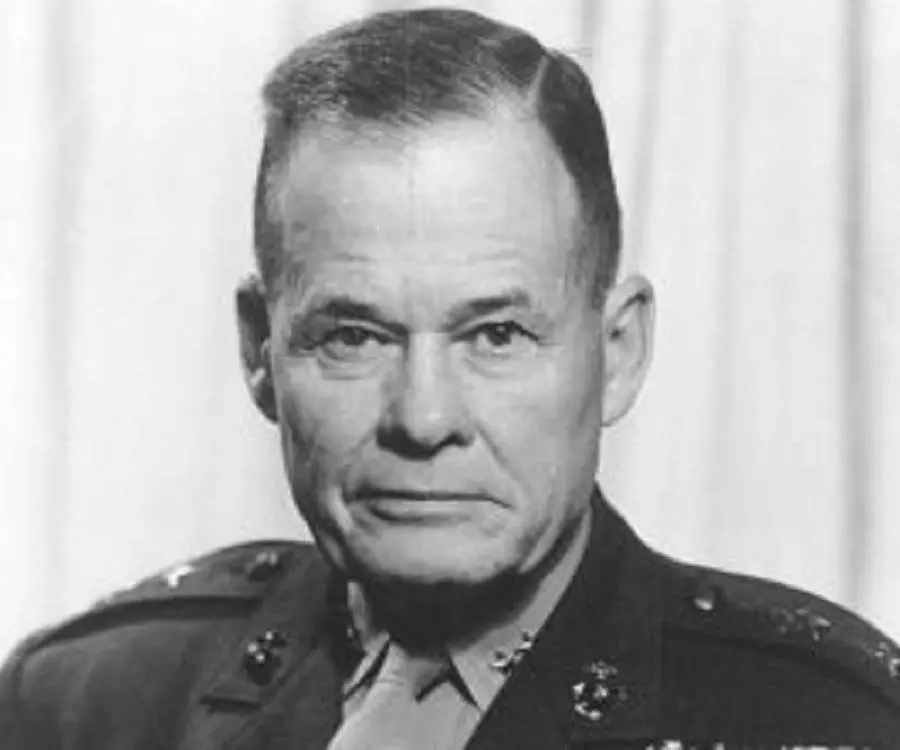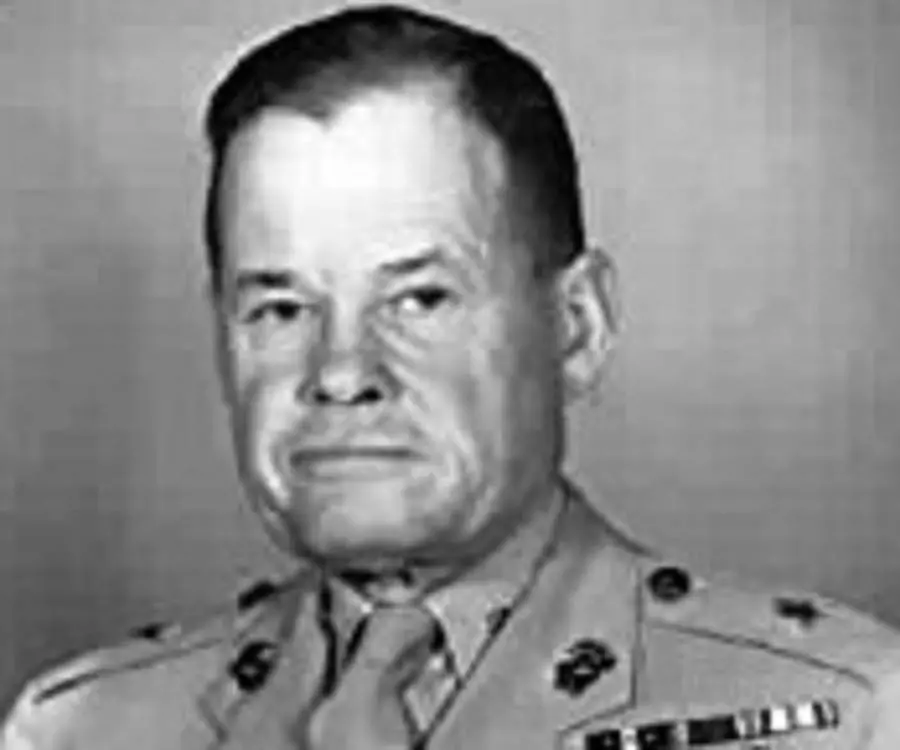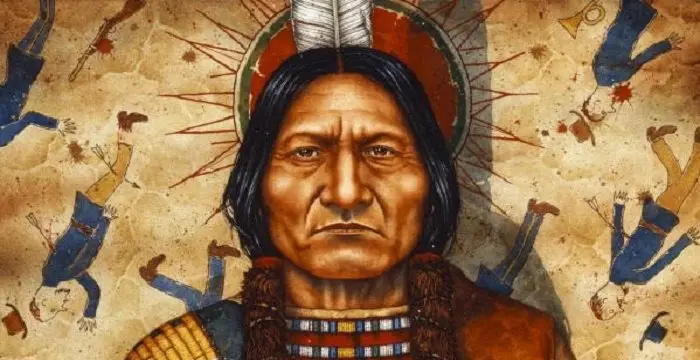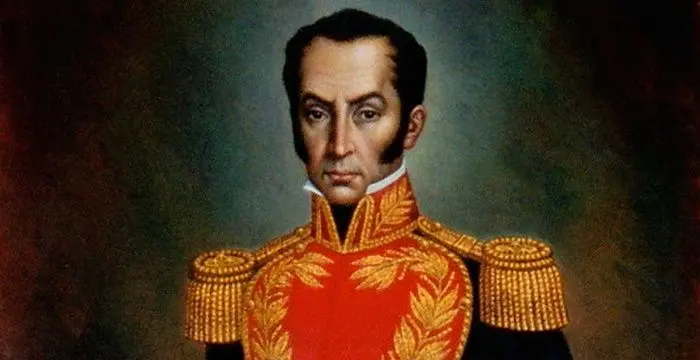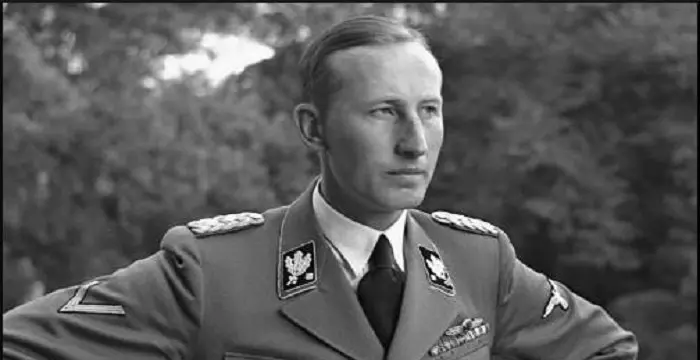
Chesty Puller - United States Marine Corps Lieutenant General, Career and Childhood
Chesty Puller's Personal Details
Chesty Puller was a US lieutenant general who served during the World War II
| Information | Detail |
|---|---|
| Birthday | June 26, 1898 |
| Died on | October 11, 1971 |
| Nationality | American |
| Famous | Leaders, Military Leaders, United States Marine Corps Lieutenant General |
| City/State | Virginia |
| Spouses | Virginia Montague Evans |
| Siblings | Emily Puller, Pattie Puller, Samuel Puller |
| Known as | Lewis Burwell Puller |
| Childrens | Lewis Burwell Puller Jr., MarthaPuller, Virginia Puller |
| Universities |
|
| Birth Place | Virginia |
| Height | 170 |
| Gender | Male |
| Father | Matthew Puller |
| Mother | Martha Puller |
| Sun Sign | Cancer |
| Born in | Virginia |
| Famous as | United States Marine Corps lieutenant general |
| Died at Age | 73 |
Chesty Puller's photo
Who is Chesty Puller?
Lewis Burwell "Chesty" Puller was a United States Marine Corps lieutenant general who served during the World War II and the Korean War. In the history of his country, he is the most decorated marine of all time. Born in a blue-collar family, Puller lost his father when he was ten years old. In his youth, he loved to listen to old Civil War stories and idolized Thomas Jonathan "Stonewall" Jackson. He first enlisted in the Marine Corps during the height of the World War I although he never saw combat in that war. Then he went on to attend the Officer Candidates School (OCS). He first saw action as a lieutenant in Haiti and later was sent to Nicaragua, where he won his first two Navy Crosses. In the mid-1930s, he spent considerable time in China and then returned to the US to serve as an instructor. During the World War II, Puller was one of the most prominent figures in the Pacific Ocean theatre and played a key role in America’s decisive victory over the Axis powers in the Pacific and Asia. During the Korean War, Puller served his country with similar distinction and was promoted to the rank of major general. He continued to be part of the Marine Corps after the Korean War ended and eventually retired in 1955, after suffering a stroke. Puller passed away in 1971 after a long illness. He was 73 years old.
// Famous Military Leaders
Sitting Bull
Sitting Bull was a Teton Dakota Indian chief who led Sioux tribes in their struggle for survival on the North American Great Plains.
Simon Bolivar
Simón Bolívar was a Venezuelan military leader who was instrumental in independence of several Latin American countries from the Spanish rule. This biography profiles his childhood, life, achievements and timeline.
Reinhard Heydrich
Reinhard Heydrich was a high-ranking German Nazi official during the World War II. Check out this biography to know about his childhood, family life, achievements and other facts about his life.
Childhood & Early Life
Born on June 26, 1898, in West Point, Virginia, U.S., Chesty Puller was one of the four children of Matthew and Martha Puller. He had two sisters, Pattie and Emily, and a brother, Samuel. Puller’s father passed away when he was ten years old. Growing up, he loved listening to old Civil War stories and considered the Confederate general Thomas Jonathan "Stonewall" Jackson as his idol.
His childhood aspirations culminated into a deep desire to join the military. In 1916, during the Border War with Mexico, Puller expressed his interest in joining the US Army but was denied because he was too young and his mother did not provide him with parental consent.
However, that did not deter him from enrolling at the Virginia Military Institute in 1917. The following year, he left the school to “go where the guns are!” After enlisting in the Marine Corps as a private, he received training at the Marine Corps Recruit Depot, Parris Island, South Carolina.
He later went to their non-commissioned officer school and Officer Candidates School (OCS) at Quantico, Virginia. On June 16, 1919, he graduated and was designated as a second lieutenant in the reserves. Subsequently, he was rendered inactive due to the reduction in force from 73,000 to 1,100 officers and 27,400 men and was ultimately appointed as a corporal.
Early Career in the Military
Chesty Puller was sent to Haiti as part of the Gendarmerie d'Haiti as a lieutenant. This was his first exposure to combat. During his five-year service there, he was involved in more than 40 engagements with the Caco rebels. He came back to the US sometime in the early 1924 and was appointed as the second lieutenant on March 6, 1924. In the next few years he was posted in marine barracks across America, including in Norfolk, Virginia; Quantico, Virginia; Pearl Harbor, Hawaii, and San Diego, California.
In 1928, he went to Nicaragua as part of the Nicaraguan National Guard detachment. Between February 16 and August 19, 1930, Puller helmed five successive operations against the armed bandit forces that had superior numbers. This earned him his first Navy Cross.
He went back to the US for a year-long Company Officers Course at Fort Benning, Georgia in July 1931, before heading to Nicaragua again in September 1932. He earned his second Navy Cross for commanding American Marines and Nicaraguan National Guardsmen in the last battle against the Sandinista rebels on December 26, 1932.
After his tenure in Nicaragua, Puller was stationed as part of the marine detachment at the American Legation in Beijing, China, where he served as the commander of an entire unit of Chinese Marines. After that, he was stationed aboard the USS Augusta, a cruiser in the Asiatic Fleet. He then got the assignment of an instructor at The Basic School in Philadelphia, where he oversaw the training of Ben Robertshaw, Pappy Boyington, and Lew Walt.
In May 1939, he served aboard Augusta once more and then went back to China. After his return to stateside in August 1941, he was assigned as the commander of 1st Battalion, 7th Marines (1/7) of the 1st Marine Division, stationed at New River, North Carolina (later Camp Lejeune).
Major Wars
The 7th Marines were deployed to protect Samoa as part of the 3rd Marine Brigade at the beginning of the Pacific theatre. They landed on May 8, 1942. They were sent back to Guadalcanal as part of the 1st division in September. Puller marshalled his battalion with characteristic brilliance in fierce action along the Matanikau. He made his way to the shore, signalled USS Ballad and then instructed the Navy destroyer to send in rescue teams for his men while providing cover fire.
It was later in Guadalcanal that Puller won his third Navy Cross and Purple Heart medal for the ‘Battle for Henderson Field’. He was appointed as the executive officer of the 7th Marine Regiment in 1943 and commanded his men in a successful attack against the heavily fortified Japanese defensive positions. On February 1, 1944, he was made colonel and later was promoted as the commander of the 1st Marine Regiment.
The Marine regiment fought the protracted battle in Peleliu. It was one of the bloodiest battles in the history of the US Marine Corps. They lost 1,749 out of about 3,000 men. Despite this, Puller ordered the Marines to commit to frontal assaults against a well-entrenched enemy.
Following the end of the war, he was assigned to the post of the Director of the 8th Reserve District at New Orleans, and later helmed the Marine Barracks at Pearl Harbor.
When the Korean War broke out, Puller returned to serve in the 1st Marine Regiment. He was present during the landing at Inchon on September 15, 1950.
He was appointed brigadier general in January 1951 and was designated to be the assistant division commander (ADC) of the 1st Marine Division. When Major General O.P. Smith, his immediate superior, was hurriedly transferred to lead the IX Corps after the death of its commander, Puller temporarily took charge of the 1st Marine division in February 1951. By 1953, he had been promoted to major general.
Awards
Over his nearly four decades of service, Chesty Puller won several accolades. He won the first two Navy Crosses during the campaign in Nicaragua. The third one was earned by him ten years later for holding a mile-long front against a larger enemy force in Guadalcanal on October 24, 1942.
The fourth Navy Cross was conferred on him for turning the tide of a battle after taking emergency command of troops in December 1943, in Cape Gloucester, New Britain, Papua New Guinea against the Japanese forces. The fifth and last Navy Cross was given to him for defending division supply roots against an outnumbering force in sub-zero weather during the Korean War in December 1950.
Puller had also received his only Purple Heart for the battle in Guadalcanal.
For his involvement in the landing at Inchon on September 15, 1950, he was awarded the Silver Star Medal.
Puller received the Distinguished Service Cross from the US Army because of his leadership during an attack by enemy aggressor forces in Korea that lasted from November 29 to December 4, 1950.
Personal Life
Puller married 29-year-old Virginia Montague Evans in 1937 in Saluda, Middlesex County, Virginia. She accompanied him to China, Hawaii, and across the United States during his service in those places. At the outbreak of the World War II, she moved back to Saluda to raise their three children: daughter Virginia and twins Martha and Lewis Jr. After Puller’s retirement from the Marine Corps, the couple settled down in the house where Mrs. Puller had been raised.
As an officer of the Marine Corps, Puller was blunt, profane and demanding. He always had a smoking pipe with him and was intensely loyal to his service and country. He despised weakness in men. The most decorated marine in American history, he inspired loyalty in his subordinates unlike any other.
He still is one of most enduring legends of the Marine Corps folklore, a perfect blend of truth and exaggeration. According to some accounts, he was given the nickname “Chesty” because of his big, thrust-out chest. The myth was that his real chest had been shot away and replaced with a steel one.
Following his father’s footsteps, Lewis Jr. joined the Marine Corps, and participated in the Vietnam War as a marine lieutenant. He lost both his legs and parts of his hands in a mine explosion. When Puller saw the state of his son, he broke down crying. Lewis Jr. later published his autobiography ‘Fortunate Son: The Healing of a Vietnam Vet’, for which he was awarded the Pulitzer Prize in 1992.
Later Years & Death
After the Korean War ended, in July 1954, Puller was appointed as the commander of the 2nd Marine Division at Camp Lejeune, North Carolina. In February 1955, he was promoted as the Deputy Camp Commander. However, he suffered a stroke and that effectively removed him from the front line. A medical and administrative battle ensued as Puller tried to get back to active duty but was ultimately denied.
Despite Puller’s wish to continue his service, he was retired on November 1, 1955. On the day of his retirement, he was assigned to the rank of lieutenant general as a tombstone promotion. He wanted to return to military service after the Vietnam War broke out but was refused because of his age.
Puller died on October 11, 1971, in a Virginia nursing home. The 1955 stroke had severely affected him. He suffered another stroke sometime in 1970. He was survived by his wife and three children.
// Famous Leaders
Edi Rama
Edi Rama is the current Prime Minister of Albania. Check out this biography to know about his childhood, life, achievements, works & timeline.
Tecumseh
Tecumseh was a Native American leader of the Shawnee clan. This biography profiles his childhood, life and timeline.
Khalifa bin Zayed Al Nahyan
Sheikh Khalifa bin Zayed Al Nahyan is the current President of the United Arab Emirates (UAE). Check out this biography to know about his birthday, childhood, family life, achievements and fun facts about him.
Chesty Puller's awards
| Year | Name | Award |
|---|---|---|
Other | ||
| 0 | Air Medal | |
| 0 | Silver Star | |
| 0 | Navy Cross | |
| 0 | Distinguished Service Cross | |
| 0 | Legion of Merit | |
| 0 | Bronze Star Medal | |
| 0 | Legionnaire of Legion of Merit | |
| 0 | Purple Heart | |
Chesty Puller biography timelines
- // 26th Jun 1898Born on June 26, 1898, in West Point, Virginia, U.S., Chesty Puller was one of the four children of Matthew and Martha Puller. He had two sisters, Pattie and Emily, and a brother, Samuel. Puller’s father passed away when he was ten years old. Growing up, he loved listening to old Civil War stories and considered the Confederate general Thomas Jonathan "Stonewall" Jackson as his idol.
- // 1916His childhood aspirations culminated into a deep desire to join the military. In 1916, during the Border War with Mexico, Puller expressed his interest in joining the US Army but was denied because he was too young and his mother did not provide him with parental consent.
- // 1917However, that did not deter him from enrolling at the Virginia Military Institute in 1917. The following year, he left the school to “go where the guns are!” After enlisting in the Marine Corps as a private, he received training at the Marine Corps Recruit Depot, Parris Island, South Carolina.
- // 1919He later went to their non-commissioned officer school and Officer Candidates School (OCS) at Quantico, Virginia. On June 16, 1919, he graduated and was designated as a second lieutenant in the reserves. Subsequently, he was rendered inactive due to the reduction in force from 73,000 to 1,100 officers and 27,400 men and was ultimately appointed as a corporal.
- // 1924Chesty Puller was sent to Haiti as part of the Gendarmerie d'Haiti as a lieutenant. This was his first exposure to combat. During his five-year service there, he was involved in more than 40 engagements with the Caco rebels. He came back to the US sometime in the early 1924 and was appointed as the second lieutenant on March 6, 1924. In the next few years he was posted in marine barracks across America, including in Norfolk, Virginia; Quantico, Virginia; Pearl Harbor, Hawaii, and San Diego, California.
- // 1928In 1928, he went to Nicaragua as part of the Nicaraguan National Guard detachment. Between February 16 and August 19, 1930, Puller helmed five successive operations against the armed bandit forces that had superior numbers. This earned him his first Navy Cross.
- // 1931He went back to the US for a year-long Company Officers Course at Fort Benning, Georgia in July 1931, before heading to Nicaragua again in September 1932. He earned his second Navy Cross for commanding American Marines and Nicaraguan National Guardsmen in the last battle against the Sandinista rebels on December 26, 1932.
- // 1937Puller married 29-year-old Virginia Montague Evans in 1937 in Saluda, Middlesex County, Virginia. She accompanied him to China, Hawaii, and across the United States during his service in those places. At the outbreak of the World War II, she moved back to Saluda to raise their three children: daughter Virginia and twins Martha and Lewis Jr. After Puller’s retirement from the Marine Corps, the couple settled down in the house where Mrs. Puller had been raised.
- // 1939In May 1939, he served aboard Augusta once more and then went back to China. After his return to stateside in August 1941, he was assigned as the commander of 1st Battalion, 7th Marines (1/7) of the 1st Marine Division, stationed at New River, North Carolina (later Camp Lejeune).
- // 1942The 7th Marines were deployed to protect Samoa as part of the 3rd Marine Brigade at the beginning of the Pacific theatre. They landed on May 8, 1942. They were sent back to Guadalcanal as part of the 1st division in September. Puller marshalled his battalion with characteristic brilliance in fierce action along the Matanikau. He made his way to the shore, signalled USS Ballad and then instructed the Navy destroyer to send in rescue teams for his men while providing cover fire.
- // 1943The fourth Navy Cross was conferred on him for turning the tide of a battle after taking emergency command of troops in December 1943, in Cape Gloucester, New Britain, Papua New Guinea against the Japanese forces. The fifth and last Navy Cross was given to him for defending division supply roots against an outnumbering force in sub-zero weather during the Korean War in December 1950.
- // 1950For his involvement in the landing at Inchon on September 15, 1950, he was awarded the Silver Star Medal.
- // 1953He was appointed brigadier general in January 1951 and was designated to be the assistant division commander (ADC) of the 1st Marine Division. When Major General O.P. Smith, his immediate superior, was hurriedly transferred to lead the IX Corps after the death of its commander, Puller temporarily took charge of the 1st Marine division in February 1951. By 1953, he had been promoted to major general.
- // 1955After the Korean War ended, in July 1954, Puller was appointed as the commander of the 2nd Marine Division at Camp Lejeune, North Carolina. In February 1955, he was promoted as the Deputy Camp Commander. However, he suffered a stroke and that effectively removed him from the front line. A medical and administrative battle ensued as Puller tried to get back to active duty but was ultimately denied.
- // 11th Oct 1971Puller died on October 11, 1971, in a Virginia nursing home. The 1955 stroke had severely affected him. He suffered another stroke sometime in 1970. He was survived by his wife and three children.
// Famous American peoples
Wentworth Miller
Wentworth Miller is an American actor and screenwriter who achieved recognition for his role in the TV series ‘Prison Break’.
Jason Simpson
Jason Simpson is the son of former NFL running back, broadcaster and actor O. J. Simpson. Check out this biography to know about his childhood, family, life, and little known facts about him.
Melissa Brim
Melissa Brim is the ex-girlfriend of former professional boxer Floyd Mayweather Jr. Check out this biography to know about her birthday, childhood, family life, achievements and fun facts about her.
Skai Jackson
Skai Jackson is an American child actress with huge fan following. Find more about her family & personal life, relationships, facts and more.
Joyce Meyer
Joyce Meyer is a Christian author and speaker. This biography provides detailed information about her childhood, life, achievements, works & timeline
Zoe LaVerne
Zoe LaVerne is an American musical.ly star. Check out this biography to know more about her family, personal life, including her age, birthday, etc.
Chesty Puller's FAQ
What is Chesty Puller birthday?
Chesty Puller was born at 1898-06-26
When was Chesty Puller died?
Chesty Puller was died at 1971-10-11
Where was Chesty Puller died?
Chesty Puller was died in Hampton
Which age was Chesty Puller died?
Chesty Puller was died at age 73
Where is Chesty Puller's birth place?
Chesty Puller was born in Virginia
What is Chesty Puller nationalities?
Chesty Puller's nationalities is American
Who is Chesty Puller spouses?
Chesty Puller's spouses is Virginia Montague Evans
Who is Chesty Puller siblings?
Chesty Puller's siblings is Emily Puller, Pattie Puller, Samuel Puller
Who is Chesty Puller childrens?
Chesty Puller's childrens is Lewis Burwell Puller Jr., MarthaPuller, Virginia Puller
What was Chesty Puller universities?
Chesty Puller studied at Virginia Military Institute, Officer Candidate School, Marine Corps Recruit Depot Parris Island
How tall is Chesty Puller?
Chesty Puller's height is 170
Who is Chesty Puller's father?
Chesty Puller's father is Matthew Puller
Who is Chesty Puller's mother?
Chesty Puller's mother is Martha Puller
What is Chesty Puller's sun sign?
Chesty Puller is Cancer
How famous is Chesty Puller?
Chesty Puller is famouse as United States Marine Corps lieutenant general
